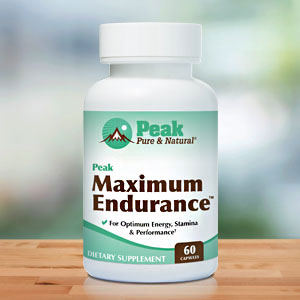Get Easy Health Digest™ in your inbox and don’t miss a thing when you subscribe today. Plus, get the free bonus report, Mother Nature’s Tips, Tricks and Remedies for Cholesterol, Blood Pressure & Blood Sugar as my way of saying welcome to the community!
Workout revelation means less time at the gym and more muscle

None of us would be surprised to hear that health experts have described sitting as the new smoking.
After all, exercise is one of the most important cornerstones to a healthy life, conferring benefits that slow brain aging, support liver health, increase lifespan, improve mental health and much, much more.
And in recent years the importance of resistance exercise, like weight-lifting, has really come to the forefront. It’s important for strong bones, to slim a fatty heart, to reduce diabetes risk and to lower risk of death from heart attack and stroke.
But top of mind for most of us is quality of life as we age. And lifting weights is one of the best ways to avoid frailty.
Still, if you’re like me you have questions about how much and how often you have to trudge over to the gym to reap these benefits — and where do we find the time?
Well, I’ve found the answers and I think you’re really going to like this as much as I did…
No mountain of work required
A team of researchers from Edith Cowan University set out to find the answer to those questions — in just four weeks.
They put three groups of participants to the test, each performing a simple arm resistance exercise known as an eccentric contraction.
That’s what you and I would call a bicep curl using a dumbbell.
Two groups performed 30 of these contractions per week. But while one group did six contractions a day for five days a week, the other crammed all 30 into a single day.
And the third group only performed six contractions one day a week.
So which group was the winner when it came to muscle strength and size?
Well, it turns out, it was the people who lifted weights more often, but did fewer reps. That was the group that did six dumbbell curls five days a week.
In fact, the researchers discovered that while the group that did 30 contractions all at once experienced a 5.8 percent increase in muscle size in just four weeks, they didn’t improve their strength at all.
And the group that only did six contractions once a week had no improvements whatsoever.
On the other hand, the people who performed just six contractions, but did it five times a week, benefitted from a more than 10 percent increase in muscle strength. Plus they grabbed the same improvement in muscle size as the group that did 30 contractions all at once.
Go for frequency, not volume
According to Exercise and Sports Science Professor Ken Nosaka, the takeaway is that small amounts of exercise done regularly can provide big benefits.
“People think they have to do a lengthy session of resistance training in the gym, but that’s not the case,” he said. “Just lowering a heavy dumbbell slowly once or six times a day is enough.”
But there’s one more thing to remember.
While frequency is key, you can exercise too often, which is why the researchers gave their study participants two days per week off from lifting weights.
“Muscle adaptions occur when we are resting; if someone was able to somehow train 24 hours a day, there would actually be no improvement at all,” said Professor Nosaka. “Muscles need rest to improve their strength and their muscle mass, but muscles appear to like to be stimulated more frequently.”
So instead of hitting the gym once a week, try doing a little bit of exercise each day at home to improve your muscle strength and enjoy living long and strong.
Editor’s note: Did you know that when you take your body from acid to alkaline you can boost your energy, lose weight, soothe digestion, avoid illness and achieve wellness? Click here to discover The Alkaline Secret to Ultimate Vitality and revive your life today!
Sources:
Exercise answer: Research shows it’s how often you do it, not how much – EurekAlert!














